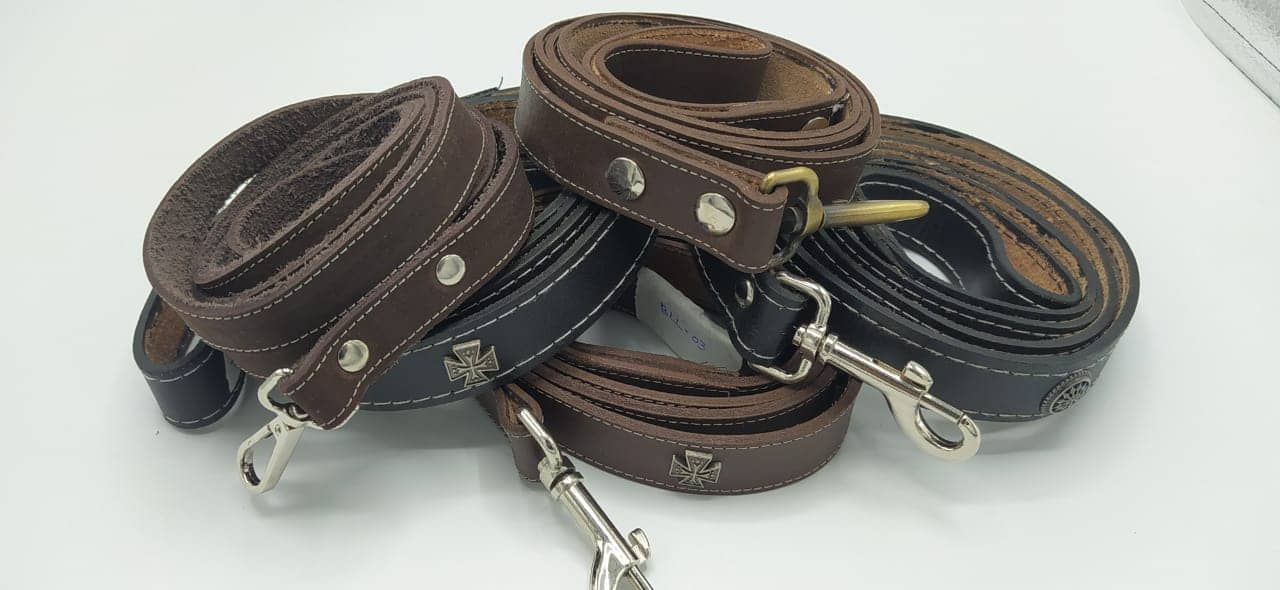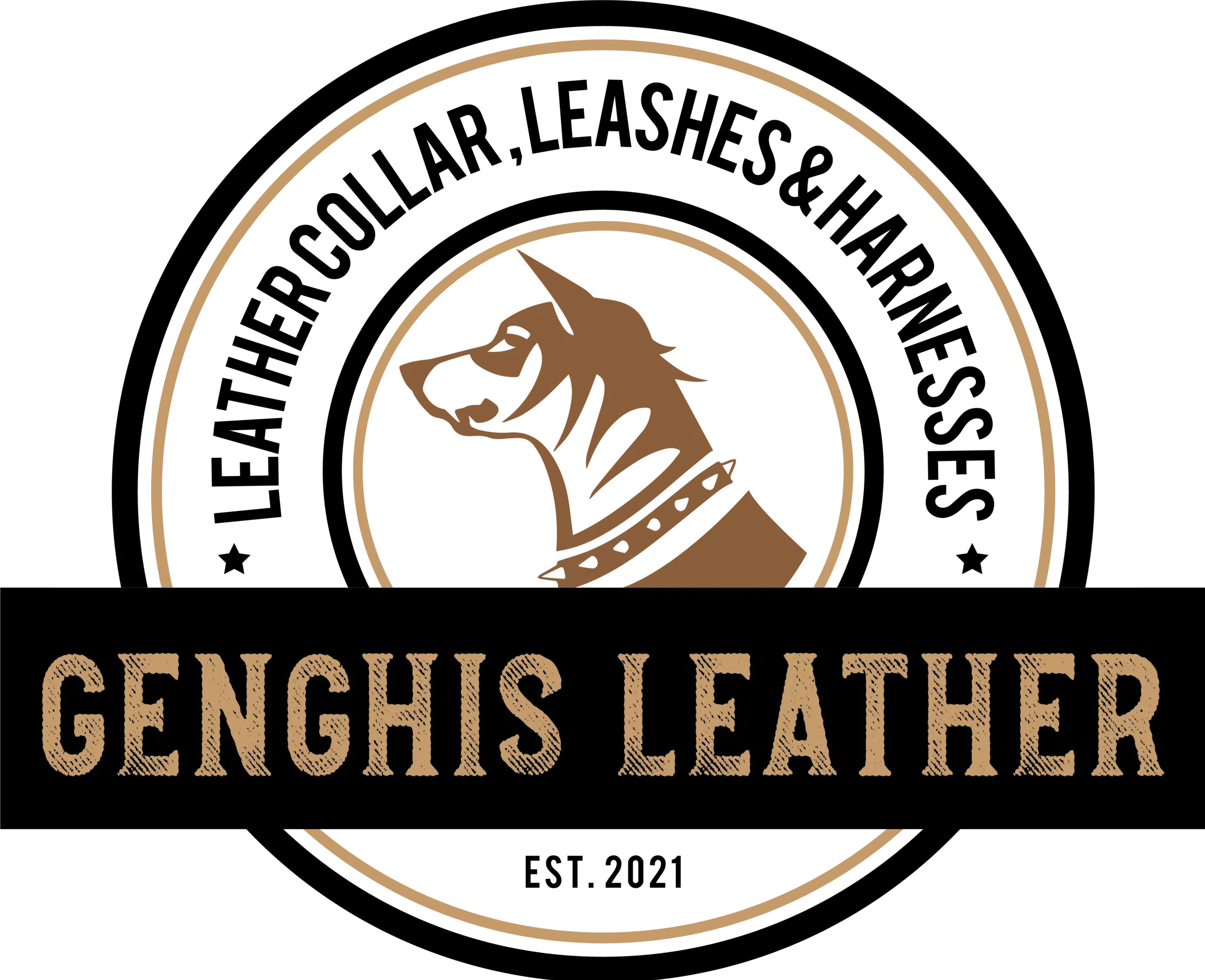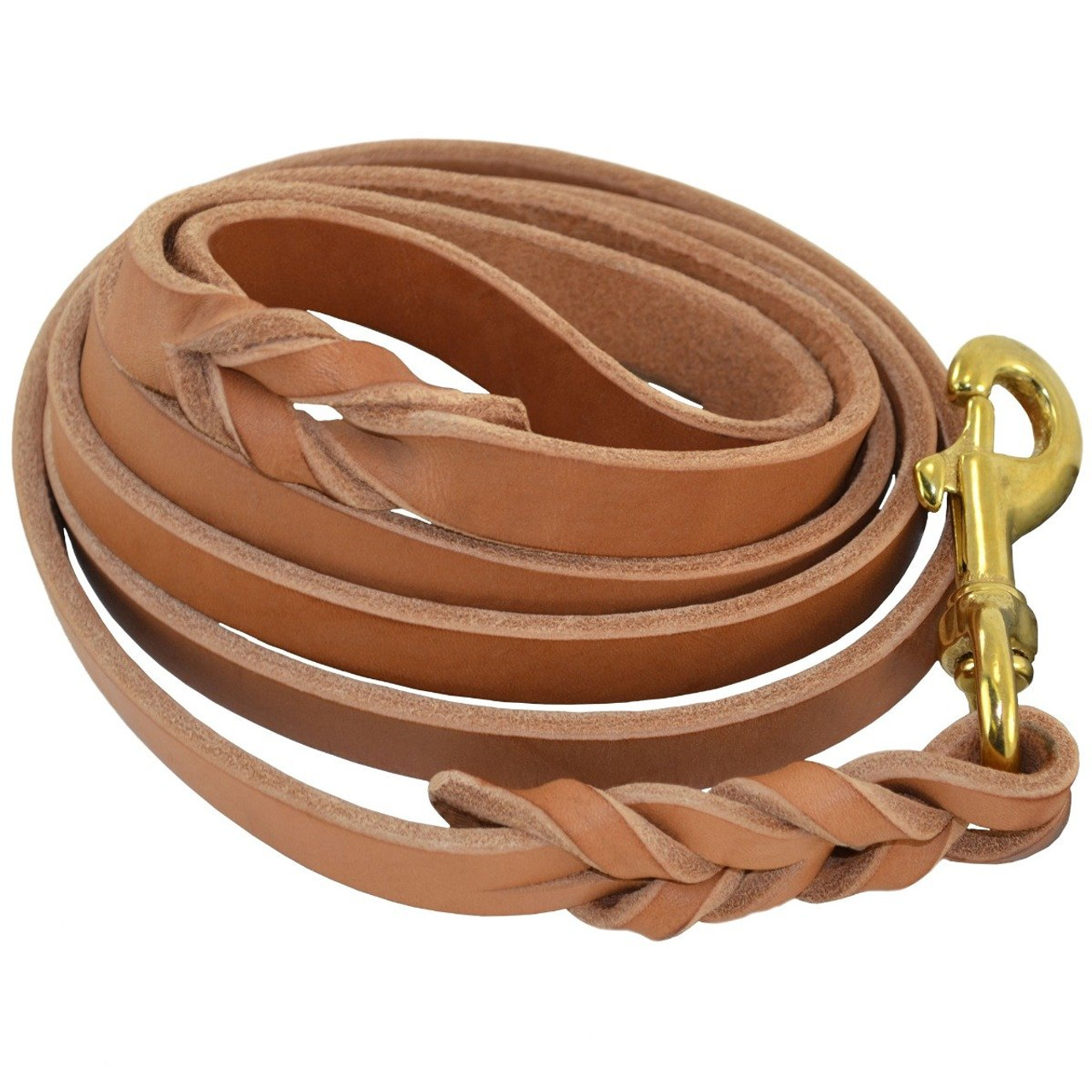How to Clean Dog Leashes: 2024 Easy Tips for Fresh, Odor-Free Walks
Is your dog’s leash starting to smell like a wet sock? We’ve all been there. Our furry friends love to explore, but their adventures often leave their leashes grimy and stinky. It’s not just about…
Is your dog’s leash starting to smell like a wet sock? We’ve all been there. Our furry friends love to explore, but their adventures often leave their leashes grimy and stinky. It’s not just about the odor – a clean dog leashes is essential for your pet’s health and your comfort during walks.
In this guide, we’ll show you how to keep your dog’s leash fresh and clean without compromising its integrity. We’ll cover effective cleaning methods, from simple hand-washing techniques to specialized products that can make your life easier. Whether you’re dealing with a muddy mess or just routine maintenance, we’ve got you covered. Get ready to say goodbye to smelly leashes and hello to more enjoyable walks with your four-legged friend.
Types of Dog Leashes and Their Materials
Dog leashes come in various materials, each with unique properties and cleaning requirements. We’ll explore the most common types of leashes and how to maintain them effectively.
Nylon and Polyester Leashes
Nylon and polyester leashes are popular choices for dog owners due to their durability and affordability. These synthetic materials are water-resistant and easy to clean. To clean nylon and polyester leashes:
- Shake off loose dirt and debris
- Prepare a mixture of hot water and mild dish soap or dog shampoo
- Soak the leash for 10-15 minutes
- Scrub with a soft-bristled brush to remove stains
- Rinse thoroughly under running water
- Air dry by hanging
For machine washing, place the leash in a mesh laundry bag and wash on a gentle cycle with cold water and mild detergent. Add towels to protect the leash and machine.
Leather Leashes
Leather leashes are known for their durability and classic appearance. They require special care to maintain their quality and prevent cracking or damage. To clean leather leashes:
- Wipe down the leash with a damp cloth to remove surface dirt
- Use a leather cleaner specifically designed for pet products
- Apply the cleaner with a soft cloth, working it into the leather
- Wipe away excess cleaner with a clean, damp cloth
- Allow the leash to air dry completely
- Apply a leather conditioner to keep the material supple
Avoid soaking leather leashes or using harsh chemicals, as these can damage the material. Regular conditioning helps prevent cracking and extends the leash’s lifespan.
Rope Leashes
Rope leashes offer a comfortable grip and are often used for training or outdoor activities. They’re typically made from materials like cotton, nylon, or polypropylene. To clean rope leashes:
- Brush off any loose dirt or debris
- Fill a sink or bucket with warm water and mild detergent
- Submerge the leash and gently agitate to loosen dirt
- Use a soft brush to scrub stubborn stains
- Rinse thoroughly with clean water
- Squeeze out excess water without twisting
- Hang to air dry completely
For polypropylene rope leashes, machine washing is often possible. Check the care instructions and use a gentle cycle with cold water if machine washing is recommended.

Preparing to Clean Your Dog Leash
Before diving into the cleaning process, it’s essential to prepare properly. This preparation ensures you clean your dog leash effectively without damaging it. Let’s explore the crucial steps to take before cleaning your leash.
Checking the Care Label
The care label on your dog leash is a vital source of information. It provides exact instructions customized to the leash’s material, ensuring you clean it correctly. Different materials like nylon, neoprene, leather, or fabric have distinct cleaning requirements. For instance, leather leashes may need special cleaners, while nylon ones can withstand more vigorous washing. Always refer to this label first to avoid damaging your leash during the cleaning process. If the care label is missing or illegible, research the best cleaning methods for the exact material of your leash online or consult with a pet supply store.
Gathering Cleaning Supplies
To clean your dog leash effectively, you’ll need the right supplies. Here’s what to gather:
- Hot water: Ensure it’s not too hot to touch, as you may need to use your hands.
- Mild dish soap or pet-safe detergent: Avoid human soaps that can disrupt your dog’s skin pH balance.
- Soft-bristled brush or sponge: These are essential for removing dirt and stains.
- Bowl or sink: You’ll need this for soaking the leash.
- Towel: Use this for squeezing out excess water after washing.
For leather leashes, you may need a specialized leather cleaner and conditioner. If your leash is particularly grimy, consider using a new scouring sponge to remove stubborn soil. Remember, the cleaning method may vary depending on the leash material, so adjust your supplies accordingly. Having these items ready before you start will streamline the cleaning process and ensure you have everything needed to thoroughly clean your dog leash.
Cleaning Methods for Synthetic Leashes
Synthetic leashes are durable and easy to clean, making them a popular choice among dog owners. We’ll explore three effective methods for cleaning synthetic dog leashes: hand washing, machine washing, and using a dishwasher.
Hand Washing Technique
Hand washing is the gentlest and most recommended method for cleaning synthetic dog leashes. Here’s how to do it:
- Fill a bowl or sink with warm water and add a small amount of mild dish soap or pet-safe detergent.
- Submerge the leash in the soapy water and let it soak for 10-15 minutes to loosen dirt and grime.
- Gently scrub the leash with a soft-bristled brush or your fingers to remove stubborn stains.
- Rinse the leash thoroughly under running water to remove all soap residue.
- Squeeze out excess water and hang the leash to air dry.
Avoid using harsh chemicals or brushes that could damage the webbing. For particularly smelly leashes, consider adding a small amount of dog shampoo to the cleaning solution to prevent skin irritation for your pet.
Machine Washing Instructions
Machine washing can be an effective method for cleaning synthetic dog leashes, but it’s essential to follow these guidelines:
- Check the care label to ensure machine washing is safe for your leash.
- Place the leash in a mesh laundry bag to protect it and your washing machine.
- Use a gentle cycle with cold or warm water.
- Add a small amount of mild detergent or pet-safe soap.
- Include a few towels in the load to provide extra protection for the leash.
- After washing, remove the leash from the bag and air dry it.
Never put synthetic leashes in the dryer, as the heat can weaken the material. If machine washing isn’t recommended for your leash, stick to hand washing to maintain its integrity and extend its lifespan.
Using a Dishwasher
While less common, some synthetic dog leashes can be cleaned in a dishwasher. Follow these steps:
- Ensure your leash is dishwasher-safe by checking the care label or manufacturer’s instructions.
- Place the leash on the top rack of the dishwasher.
- Use a mild, unscented dishwashing detergent.
- Run a gentle cycle with warm water.
- Remove the leash immediately after the cycle ends.
- Hang the leash to air dry completely before use.
This method is particularly useful for leashes with built-in hardware or those made from materials that can withstand higher temperatures. But, it’s crucial to note that not all synthetic leashes are dishwasher-safe, so always verify before using this cleaning method.
Proper Cleaning of Leather Leashes
Leather leashes require special care to maintain their durability and appearance. We’ll guide you through the gentle cleaning process and conditioning techniques to keep your leather leash in top condition.
Gentle Cleaning Process
To clean a leather leash, start by removing dirt with a soft, dry cloth. Mix warm water with a mild, pH-balanced soap specifically designed for leather. Dip a clean cloth into the solution, wring it out, and gently wipe the leash. Avoid soaking the leather, as excess moisture can damage it. For stubborn stains, use a soft-bristled brush to work the solution into the leather gently. Wipe the leash with a damp cloth to remove soap residue, then dry it with a clean towel. Allow the leash to air dry completely at room temperature, away from direct heat or sunlight. Never use harsh chemicals or abrasive cleaners on leather leashes.
Conditioning and Maintenance
After cleaning, condition your leather leash to prevent cracking and maintain its suppleness. Apply a small amount of leather conditioner using a soft cloth, working it into the leather in circular motions. Let the conditioner absorb for 10-15 minutes, then buff the leash with a clean cloth to remove any excess. Condition your leather leash every 1-3 months, depending on usage and exposure to elements. Store the leash in a cool, dry place when not in use. Avoid hanging it in direct sunlight or near heat sources, which can cause the leather to dry out and crack. Regularly inspect your leather leash for signs of wear and tear, addressing any issues promptly to extend its lifespan.
Deodorizing and Disinfecting Dog Leashes
Dog leashes can accumulate odors and bacteria over time. We’ll explore natural deodorizing answers and safe disinfection methods to keep your dog’s leash fresh and hygienic.
Natural Deodorizing Answers
Natural deodorizers effectively eliminate unpleasant odors from dog leashes. Here are some eco-friendly options:
- Baking soda: Sprinkle baking soda on the leash, let it sit for 30 minutes, then brush off.
- White vinegar: Mix equal parts water and white vinegar, soak the leash for 15 minutes, then rinse thoroughly.
- Lemon juice: Combine 1 part lemon juice with 2 parts water, apply to the leash, and air dry.
- Sun exposure: Hang the leash in direct sunlight for several hours to naturally neutralize odors.
- Essential oils: Add a few drops of pet-safe essential oils (e.g., lavender or tea tree) to water for a refreshing scent.
For stubborn odors, create a paste using baking soda and water. Apply it to the leash, let it dry, then brush off. These methods are gentle on leash materials and safe for your dog.
Safe Disinfection Methods
Disinfecting dog leashes is crucial for eliminating harmful bacteria and parasites. Here are effective, pet-safe disinfection techniques:
- Boiling water method:
- Submerge the leash in boiling water for 5 minutes
- Remove with tongs and air dry
- Vinegar solution:
- Mix 1 part white vinegar with 4 parts water
- Soak the leash for 10 minutes, then rinse and air dry
- Hydrogen peroxide:
- Create a solution of 1 quart hydrogen peroxide, 1/4 cup baking soda, and 1 tsp dish soap
- Soak the leash for 20-30 minutes, rinse thoroughly, and air dry
- Pet-safe disinfectant spray:
- Use a commercial pet-safe disinfectant
- Follow the product instructions for application and drying time
- Steam cleaning:
- Use a handheld steam cleaner for deep disinfection
- Ensure the leash is completely dry before use
Always check the leash’s care label before disinfecting. Never use bleach or harsh chemicals, as they can damage the leash and irritate your dog’s skin.
Drying and Storing Your Clean Dog Leash
After cleaning your dog leash, proper drying and storage are crucial to maintain its quality and extend its lifespan. Let’s explore the best practices for air drying and storing your clean leash.
Air Drying Best Practices
Air drying is the safest method for drying dog leashes. Remove excess water by squeezing the leash gently or using a towel. Lay the leash flat on a clean, dry surface or hang it to dry. Avoid direct sunlight or heat sources, as these can damage the materials. For faster drying, use a fan to circulate air around the leash. Leather leashes require special care; hang them in a well-ventilated area away from direct heat. Ensure the leash is completely dry before use or storage to prevent mold and mildew growth.
Proper Storage Tips
Proper storage keeps your dog leash clean and ready for use. Choose a cool, dry place away from direct sunlight to prevent material degradation. Use hooks or designated storage answers to hang leashes, avoiding tangling and maintaining their shape. For leather leashes, store them flat or loosely coiled to prevent creasing. Keep leashes separate from other pet supplies to avoid cross-contamination. Regularly inspect stored leashes for signs of wear or damage. Consider using a breathable bag or container for long-term storage, especially for leather leashes. Proper storage not only extends the life of your leash but also ensures it’s always in good condition for your next walk.
Frequency of Cleaning Dog Leashes
Regular cleaning of dog leashes is essential for maintaining hygiene and extending their lifespan. The frequency of cleaning depends on factors such as usage, environment, and material.
Regular Maintenance Schedule
To keep your dog’s leash in optimal condition, follow this maintenance schedule:
- Daily: Inspect the leash for visible dirt, debris, or damage after each use.
- Weekly: Shake off loose dirt and wipe down the leash with a damp cloth.
- Bi-weekly: For frequently used leashes, perform a thorough cleaning every two weeks.
- Monthly: Deep clean and disinfect the leash, paying extra attention to hardware and attachment points.
- Seasonally: Assess the leash’s overall condition and replace if necessary.
For leashes used in muddy or wet conditions, clean immediately after use to prevent dirt from setting in. Nylon and synthetic leashes can be machine washed in a mesh bag on a gentle cycle, while leather leashes require hand cleaning with specialized products.
Signs Your Leash Needs Cleaning
Recognizing when your dog’s leash needs cleaning is crucial for maintaining hygiene and functionality. Look out for these signs:
- Visible dirt or mud: If you can see soil or grime on the leash, it’s time for a cleaning.
- Unpleasant odor: A smelly leash indicates the presence of bacteria or mold.
- Stains: Discoloration or marks on the leash surface suggest it needs attention.
- Stiffness: If the leash feels less flexible than usual, it may have accumulated dirt or oils.
- Matted fibers: For rope or fabric leashes, matted or clumped fibers indicate a need for cleaning.
- Sticky residue: A tacky feel on the leash surface suggests the buildup of oils or other substances.
- Discoloration of your hands: If handling the leash leaves residue on your hands, it’s time to clean.
Regular cleaning not only keeps the leash hygienic but also allows you to inspect for wear and tear, ensuring your dog’s safety during walks.
Conclusion
Keeping your dog’s leash clean is essential for both hygiene and durability. We’ve covered various methods customized to different leash materials ensuring you can maintain your pet’s gear effectively. Regular cleaning not only eliminates odors but also allows you to inspect for wear and tear keeping your furry friend safe during walks.
Remember to always check care labels follow material-exact cleaning instructions and dry your leash properly. By incorporating these cleaning practices into your routine you’ll extend the life of your leash and enjoy more pleasant walks with your canine companion. Happy cleaning and even happier walking!

